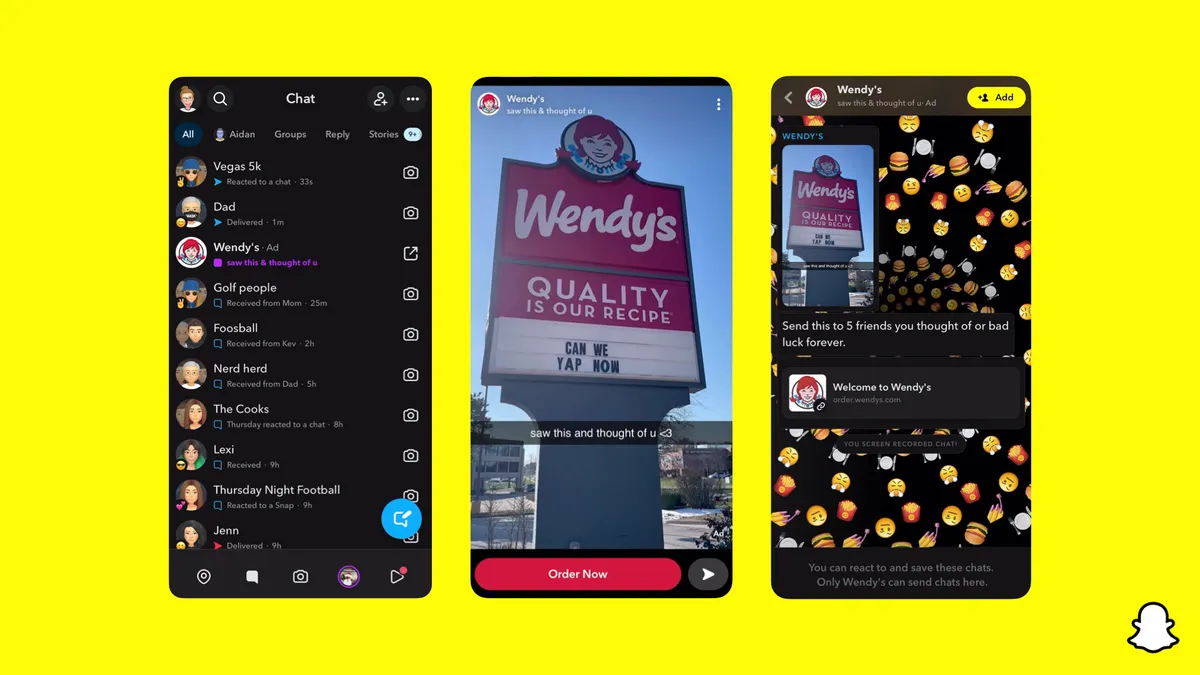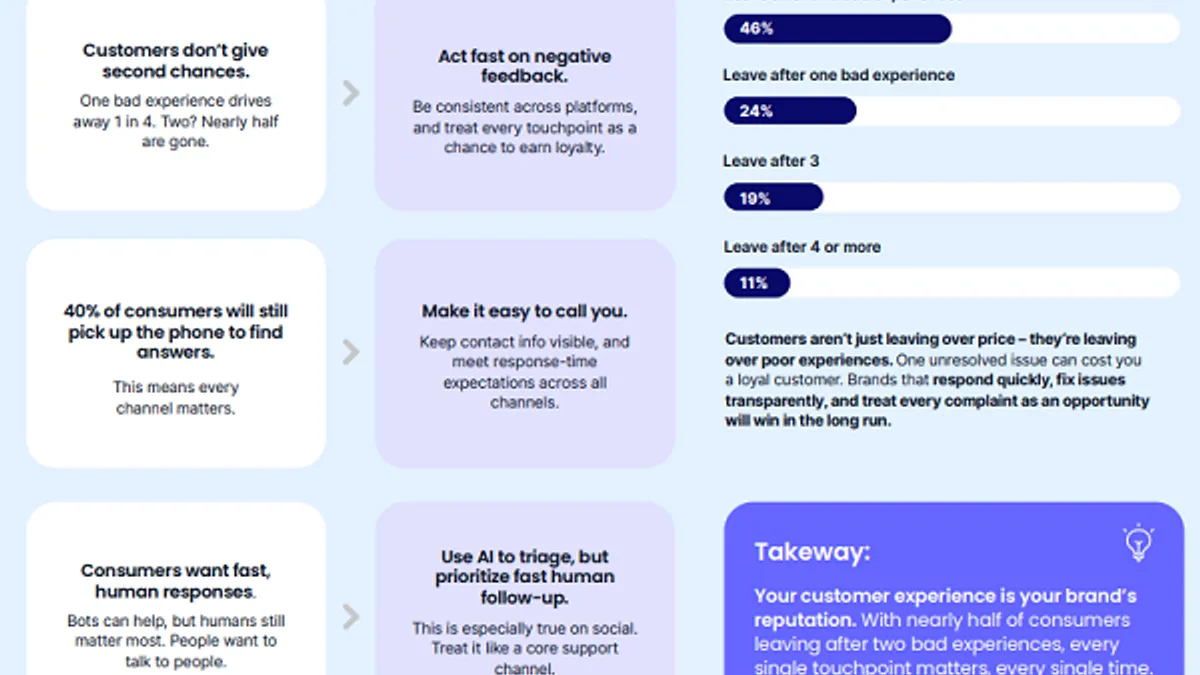The impact of mobile marketing innovations and disruptions of years' past will continue to come into focus in 2019 as markets mature and leading players battle for dominance. That’s forecast to be particularly prevalent for mobile video and augmented reality (AR), where strong adoption could hatch some winners, some losers and several acquisitions or mergers.
Mobile marketers will also continue to see how social commerce and voice technology can affect the entire customer journey and, when executed well, shorten the sales funnel. Meanwhile, the rollout of 5G will elevate network speed and marketing capabilities across a newly supercharged mobile landscape.
Below are six key developments set to shake out this year in the mobile marketing world.
A fight for dominance in mobile video
The numbers confirm what many already know: Mobile video set records in 2018, with even more growth predicted to come. Smartphones became the dominant channel to watch online video, with mobile's share of online "video starts" crossing 50% for the first time. In tandem, mobile is forecast to account for 72% of the growth in spending on online video advertising. As video continues to blossom, 2019 is likely to see big players in the space fight for dominance.
"You have some major forces like Jeffrey Katzenberg and Quibi who are now getting into a premium, Hollywood game for a mobile-first vision," Peter Csathy, CEO of consulting firm Creatv Media, told Mobile Marketer. "Major brands will continue to invest significantly in mobile video and perhaps step up the game in production, quality and budgets, following the lead of those major forces."
"Major brands will continue to invest significantly in mobile video and perhaps step up the game in production, quality and budgets."

Peter Csathy
CEO, Creatv Media
The next 12 months could prove make-or-break for new players and for two big names that launched in 2018: Facebook Watch and Instagram's IGTV. Despite Facebook's billion-dollar investment in these platforms, they have so far underperformed. Facebook clearly sees Watch as a driver of growth, having expanded its ad sales to 40 countries, but the service has struggled to drive viewership. The company will have to prove that both Facebook and Instagram are sources of original content, not just social platforms, Csathy explained, lest they join the mobile-first video graveyard populated by failed efforts from Samsung, Comcast, Verizon and more.
The road to success will require "continuous experimentation," regarding every facet of content. It could also push platforms further into M&A of other content sources and brands.
"Brand-driven and content-driven M&A will accelerate through 2019," Csathy said, as platforms look to secure "targeted audiences that [they] can own and really serve."
Voice tech's blossoming role in the household
If this year was about testing smart speakers' usability in the household, 2019 will be the year of brands proving their voice tech's value. By the end of 2018, ownership of smart speakers like Amazon Echo or Google Home was forecast to hit nearly half (48%) of Americans, up from 32% in August, per Adobe Analytics.
Smart speaker adoption is driving consumers' voice tech usage and pushing marketers to explore how to tap into this burgeoning channel — something that will only evolve this year as people grow more comfortable conversing with devices and the technology becomes increasingly predictive, according to TetraVX's director of marketing Becky Linahon.
"We'll see these smart home devices searching on our behalf," she told Mobile Marketer. "Instead of asking 'can you order almond milk?' maybe my fridge will remind me I'm almost out, suggest the brand I purchased last time and tell me where I can get it for the best price nearby."
One challenge as voice technology evolves will be customer acquisition because many voice assistants recommend products and brands based on a user's purchase history. But what about non-brand loyalists, or those already keen on a different brand?
"When I tell Alexa I need laundry detergent, she'll say 'you bought Tide last week. Do you want to buy Tide again?' Out of simplicity, I'll say 'sure,'" Linahon said. This will push marketers to get more creative in acquiring new customers or luring them from competitors, she suggested.
In 2019, organizations will need to understand their voice tech's place in a household and make sure it plays a role so purposeful, users just can't turn it off, Devbridge Group's president Aurimas Adomavicius said in emailed comments.
Social commerce: the new price of admission
While social commerce initially was slow to catch on, social media as a sales channel will soon springboard from a "nice to have" to the "price of admission" for savvy marketers, Columbus Consulting CEO Jon Beck said in comments to Mobile Marketer. About 66% of brands analyzed by researcher Gartner have adopted social commerce strategies within the past year, but according to Elastic Path CMO Darin Archer, brands in 2018 primarily used Instagram, Facebook, Pinterest and Snapchat for acquisition efforts — boosting awareness, generating leads and advertising products. This year, the industry is set to break that tide and focus on engagement, experts said.
The goal was once to attract attention and drive consumers to an online store, Archer told Mobile Marketer. In 2019, more social channels will open their platforms to host these journeys natively.
"We can't change these paradigms overnight, but now these platforms are stepping back and saying, 'hey we need to make this easier.'"

Darin Archer
CMO, Elastic Path
"We can't change these paradigms overnight, but now these platforms are stepping back and saying, 'hey we need to make this easier,'" Archer said. "It needs to be more of a convenient, one-click experience on your favorite social app versus being directed off-site to a lengthy checkout."
Marketers will need to continue to adapt to how people interact with social media, including through formats like product cards, shoppable pins, chatbots and other fresh features 2019 has in store.
"Stories have redefined the way brands communicate on Instagram, and creative marketers are now learning to use this format to address each stage of the customer journey, from awareness to direct purchase," said Talkwalker CEO Todd Grossman. "We'll see even more investments in this channel in 2019."
Influencer marketing gets bigger but goes small
Significant growth and a few changes are on the road map for influencer marketing this year. The market size for the strategy will exceed $8 billion in 2020, according to InfluencerDB's State of The Industry Report.
"What will be a big shift in 2019 is traditional dollars — whether it's from traditional media or PR budgets — going directly into influencer marketing," Jamie Reardon, CEO of Find Your Influence, told Mobile Marketer.
To support their increased investments, marketers will continue to fine-tune their benchmarks for influencers in order to keep a "pulse" on the space, she explained.
"What will be a big shift in 2019 is traditional dollars — whether it's from traditional media or PR budgets — going directly into influencer marketing."

Jamie Reardon
CEO, Find Your Influence
"For the last five years, often times influencers have been looked at as incremental dollars, but moving forward, big brands and agencies will be putting together plans for the full year because they have the benchmarks," Reardon said.
With the budget reallocation will come the need for the advertising industry to get serious about increasing trust, transparency and measurement in influencer marketing, as outgoing Unilever CMO and industry thought leader Keith Weed called for at Cannes Lions last year.
"When it comes to the entire industry as a whole, guarantees are an aspect brands need and require, whether it's engagements, impressions or video views," Reardon said.
As campaigns become more robust, brands and agencies will increasingly look for ways to stand out. That will require finding the right influencer for the right campaign. In 2019, brands could leverage localized micro-influencers to better serve campaigns that require a more authentic, specific and local touch, per InfluencerDB's report.
5G set to supercharge mobile ecosystem
While the 4G mobile network set the stage for more powerful video streaming, programmatic marketplaces, artificial intelligence and a first taste of augmented and virtual reality (AR/VR), experts said ultrafast 5G is set to bring about even more capabilities in the mobile world.
Faster download speeds up to 10 times that of 4G will enable marketers to dive deeper into interactive ads, such as playable and AR formats, to offer richer experiences without network latency for mobile users and gamers, according to Tal Shoham, COO at mobile monetization and marketing company ironSource.
"We'll also see an increase in games offering demos of their games before download, as this heavier ad format will no longer be constrained," Shoham said. "The app stores will therefore open up to these bigger games, leading to richer gaming experiences on mobile devices as the type and number of available games increases."
5G's ability to process data more swiftly is predicted to supercharge marketers' capabilities around personalized content and real-time ad targeting at a more granular level, as well as power the evolution of connected devices like cars, speakers and wearables. An October Intel and Ovum study forecasts that video will comprise 90% of all 5G traffic in 10 years, signaling major opportunity for marketers to develop quality mobile content and better engage audiences.
Last month, Verizon and Samsung said they plan to start selling a 5G-capable smartphone within the first half of 2019. Apple is reportedly unlikely to release similar hardware until 2020, potentially giving rivals a chance to woo Apple users to trade in their iPhones. Meanwhile, the 5G ecosystem is expected to see steady expansion this year and beyond.
"In 2024, we project that 5G will reach 40 percent population coverage and 1.5 billion subscriptions, making it the fastest generation ever to be rolled out on a global scale," Ericsson EVP Fredrik Jejdling wrote in a November report.
AR moves out of native apps and onto the mobile web
AR continued its disruptive streak in 2018, becoming a key element of both mobile ads and shopping on social platforms. Forecast to develop into a $83 billion market by 2021, the next 12 months will see the AR space continue to balloon.
"AR is going into its grown-up phase," Caspar Thykier, CEO and co-founder of AR platform Zappar, told Mobile Marketer.
Platforms like Apple, Google and Facebook will continue to dominate the space, either by forcing smaller firms to collapse (as Blippar did), innovate (as TikTok has) or be acquired outright. Perhaps Amazon and Snapchat's already cozy relationship gets even cozier as the former moves into AR shopping.
One key development is likely to be a broader move to the mobile web, which will help brands untangle their AR campaigns from connection partners like Facebook, Snapchat and Shazam that offer platforms for AR — for a price — and are able to keep their data within walled gardens.
"The best AR is still a preserve of native apps in terms of performance and functionality, and the big change that we're going to see is a gradual a move to mobile web AR," Thykier said. "That's significant for businesses and brands, especially for consumer-packaged goods brands, who are looking to leverage connected packaging and passive print but can't really command having an app on the user's home screen."
























